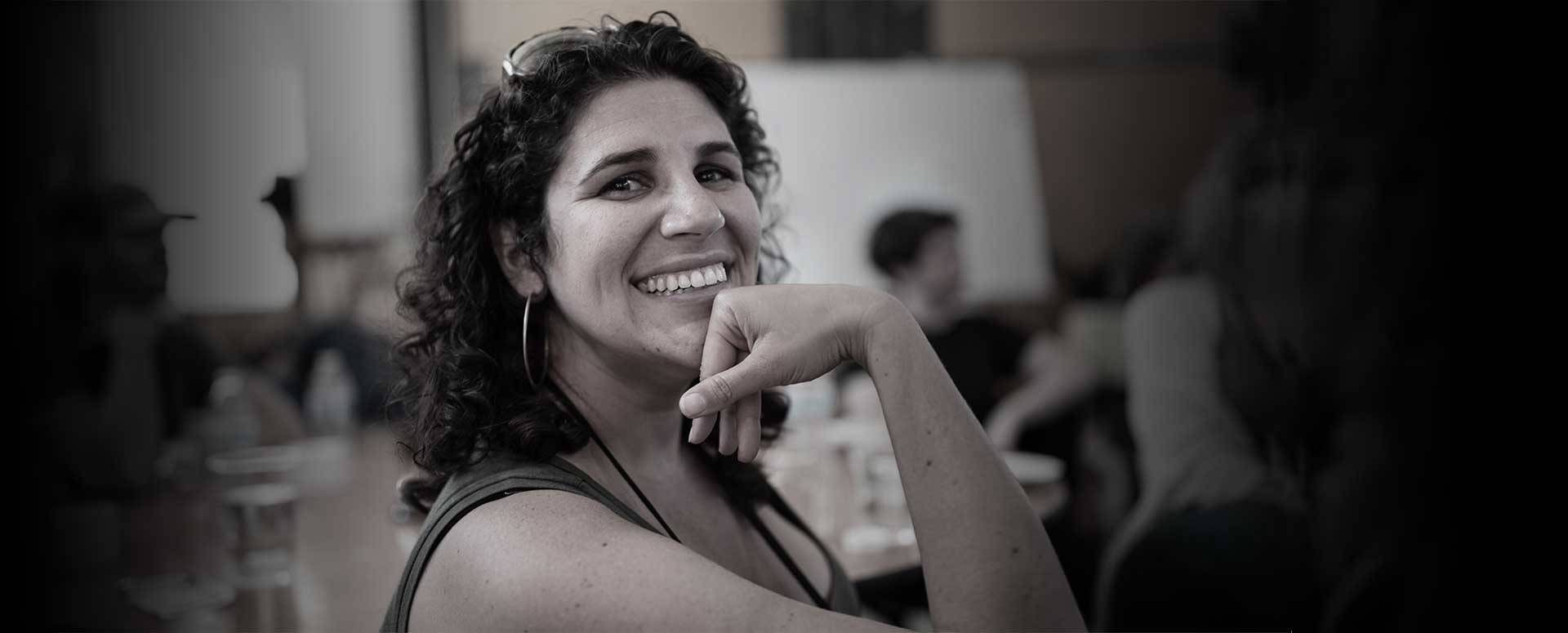
Jess Kessin
Design Leader, Entrepreneur & Educator
Jess Kessin
Design Leader, Entrepreneur & Educator
Biography
Jess Kessin is a design leader, entrepreneur, and educator with a deep passion for Human-Centered Design and using design to create a more equitable and responsible future. For the past 25 years, Jess has been driven by using design to change the world to be more inclusive and accessible.
Jess currently leads Design and Design Strategy for Invitae, a HealthTech company working to democratize genomic data. Jess was brought in to grow the design team and shift design from a resource to a strategic asset. In just over a year she has grown the team from ve junior UX/UI designers to a team of 17 including Design Strategists, Service Designers, Researchers, and ten product designers. She has leveled up the skills as well as the strategic voice of the team. Jess also teaches design thinking workshops around the organization, the most attended (optional) course at the company, and created a design ambassador program to help level-up design. In just over a year, design is now involved in almost every area of the company from digital health eorts to the future of Value-Based Care and business development.
Jess has been teaching at Stanford since 2007. For seven years she taught undergraduates in Stanford’s Product Design & Mechanical Engineering Program and has taught Design Thinking to executives at the Stanford D.School for the past decade.
Prior to Invitae, Jess was a consultant helping companies to change their corporate culture around Diversity, Equity, Inclusion, and Design Thinking. Her recent consulting and speaking engagements have included Silicon Valley Bank, Forshay, Asana, Hopelab, Amgen, Mitsubishi, Statefarm, Tuck School of Business, InterSystems, and Imagine Creativity Center.
In 2015, Jess went to Capital One to shift the Credit Card LOB to a human-centered approach as the Director of Design Strategy. She subsequently ended up starting a Physical Experience Design team and running Data visualization as well. Jess became known for running the happiest teams with the most daring designers. She repeatedly received unprecedented 100% management scores and grew teams that thrived.
At Bear River International, Jess became the rst female VP and Partner after growing the design division from one designer to a team of eight and took BRI from four products in one retailer to dozens of products in over 20 retailers internationally.
Development by Design (DbD) was a toy company that Jess founded to provide opportunities for play to children of ALL needs and abilities. Partnering with an occupational therapist, she created a line of 14 products, all based in Universal Design. They simultaneously helped the parents and caregivers through education, skill development training, and other systems. The products were acclaimed by parents, therapists, and educators and appeared in national and international retailers ranging from toy stores to Museum stores like the SF MoMA and the Met in NY, to Barnes & Noble where they commanded a full end-cap. Universal Design made the toys popular amongst kids and adults with and without disabilities.
Threads of Jess’s passion for Inclusive Design started before she was even a designer. She was involved with the Deaf community early on and spent college working as a Sign Language Interpreter. She believes that design is the great equalizer and as designers, it is our responsibility to design the future that ALL people deserve, not just those who happen to fall in the center of the bell curve.
Speech Topics
The Design's Responsibility: Designing a Future that is Equitable, Sustainable & Responsible
Designers create the products, systems and services that surround us. Traditional methods of design focus on the "average" consumer and the current scenario. We need to think differently so that we are serving ALL people and our planet at the same time. We need to design for the future that we want and need.
Inclusive Design: Accessibility is a Design Problem, Not a Medical Problem. How Do You Design a World that Allows Everyone to Participate Equally?
As we create products, systems, and services, we are designing the future of society. Traditionally we design for the center of the bell curve, healthy 18–35-year olds of a certain socio-economic background etc. That is not the world in which we live, and by designing in this way, we are denying people access to participate in a society built for them. We need to change the way we are working to create the inclusive future we need.
The Designer's Mindset: How Design Thinking Can Change the Way We Work?
We are rewarded as smart people in our society to know the answer before we start. By predetermining the destination, we are creating the predictable future and moving towards the obvious solutions. While this works for many things, the big messy problems that we are facing as a society need us to think differently. What do we do when the answer is not obvious, and the paradigm needs to shift in a way we can't yet imagine? That is the power of a designer.
Leading & Growing Bold, Happy Teams That Thrive
We are working in uncertain times and in new ways with remote teams. Making sure teams feel connected, psychologically safe and supported is much harder than it has been in the past. Whether remote or in person, the health of the team will determine how daring and bold that team can be. To answer the big messy problems of today's world, we can't play it safe.To create an environment where your team can push the limits, will transform the team from being ordinary to extraordinary.

)
)
)
)